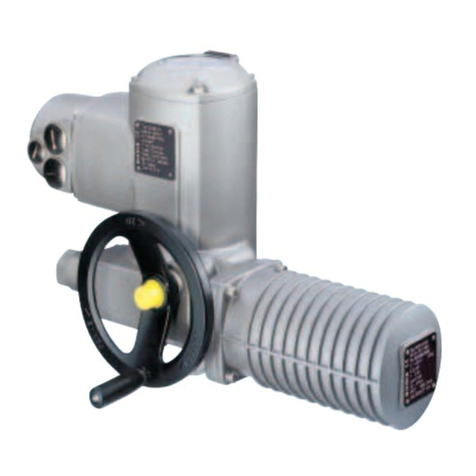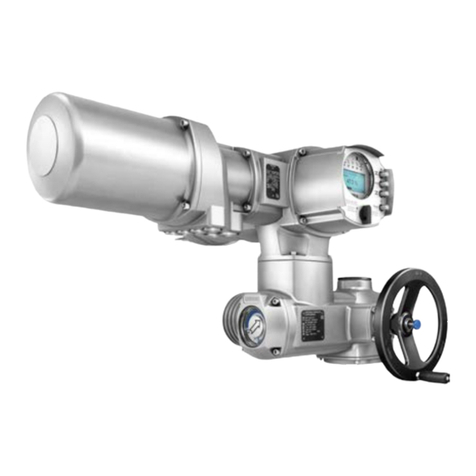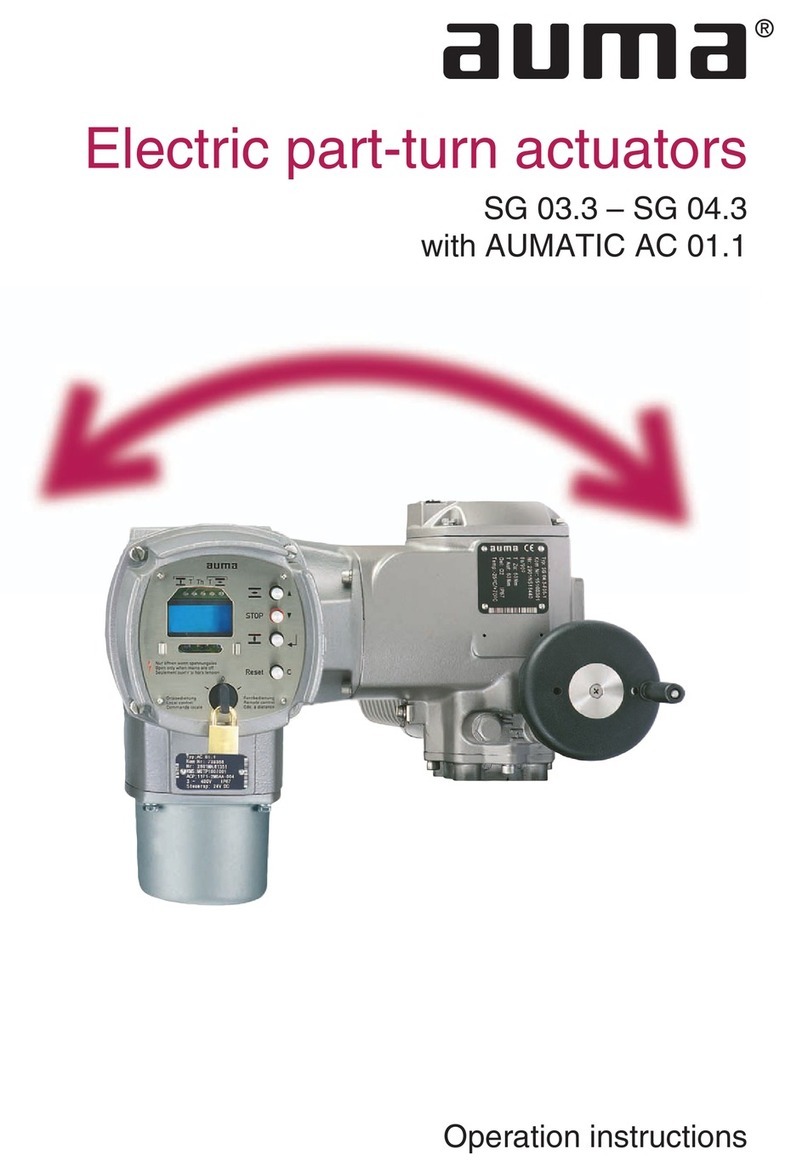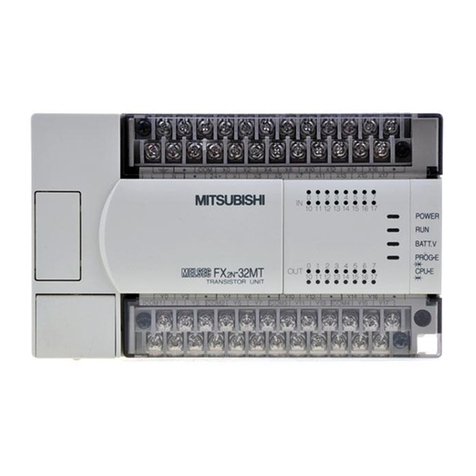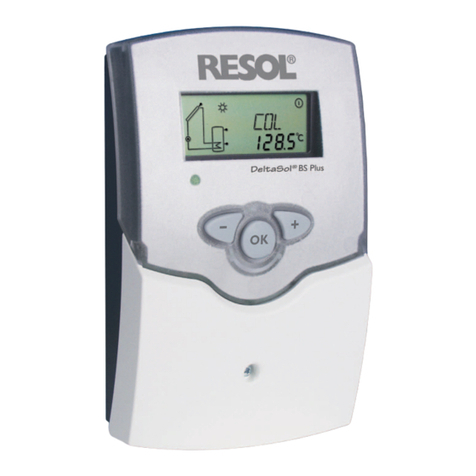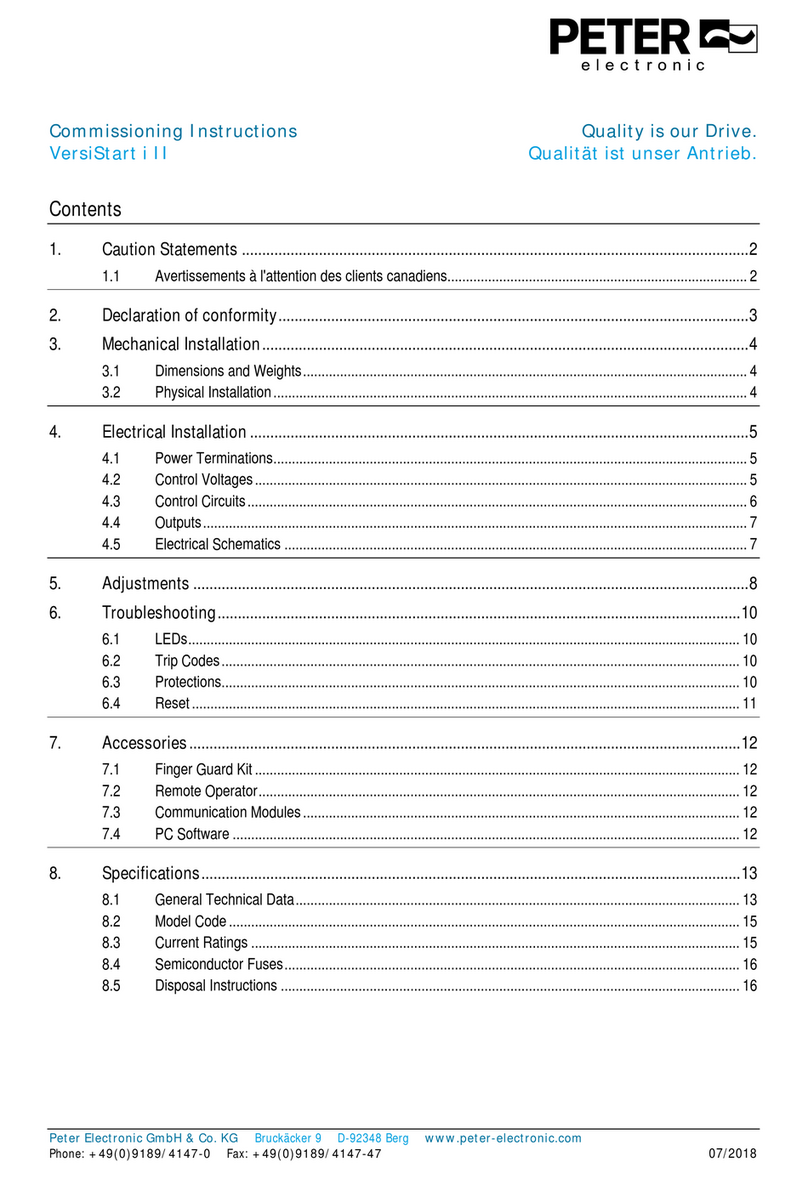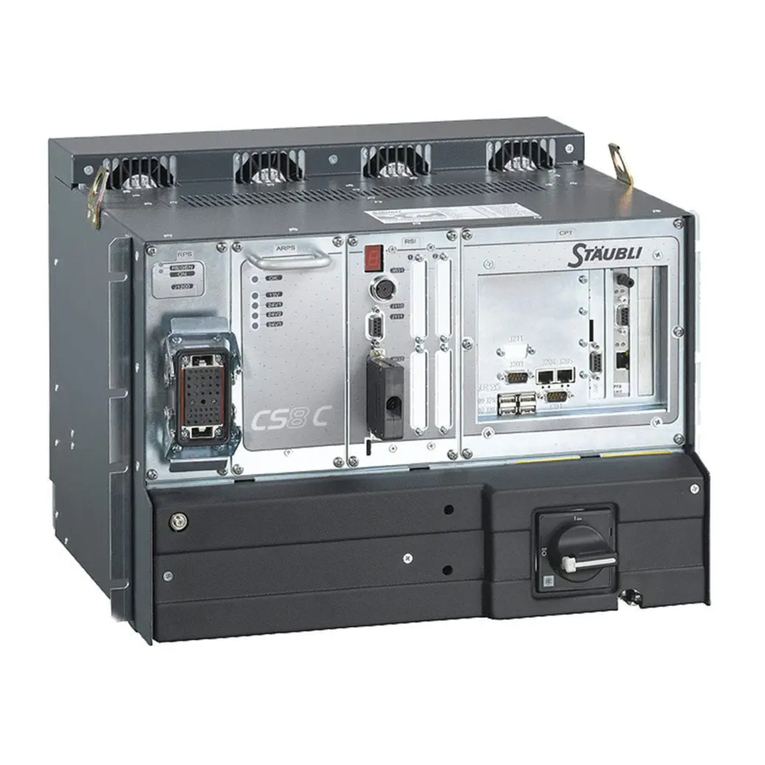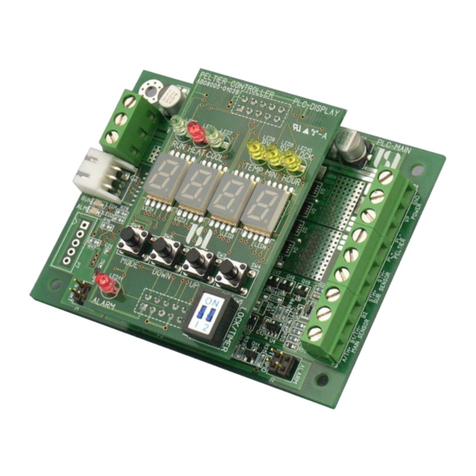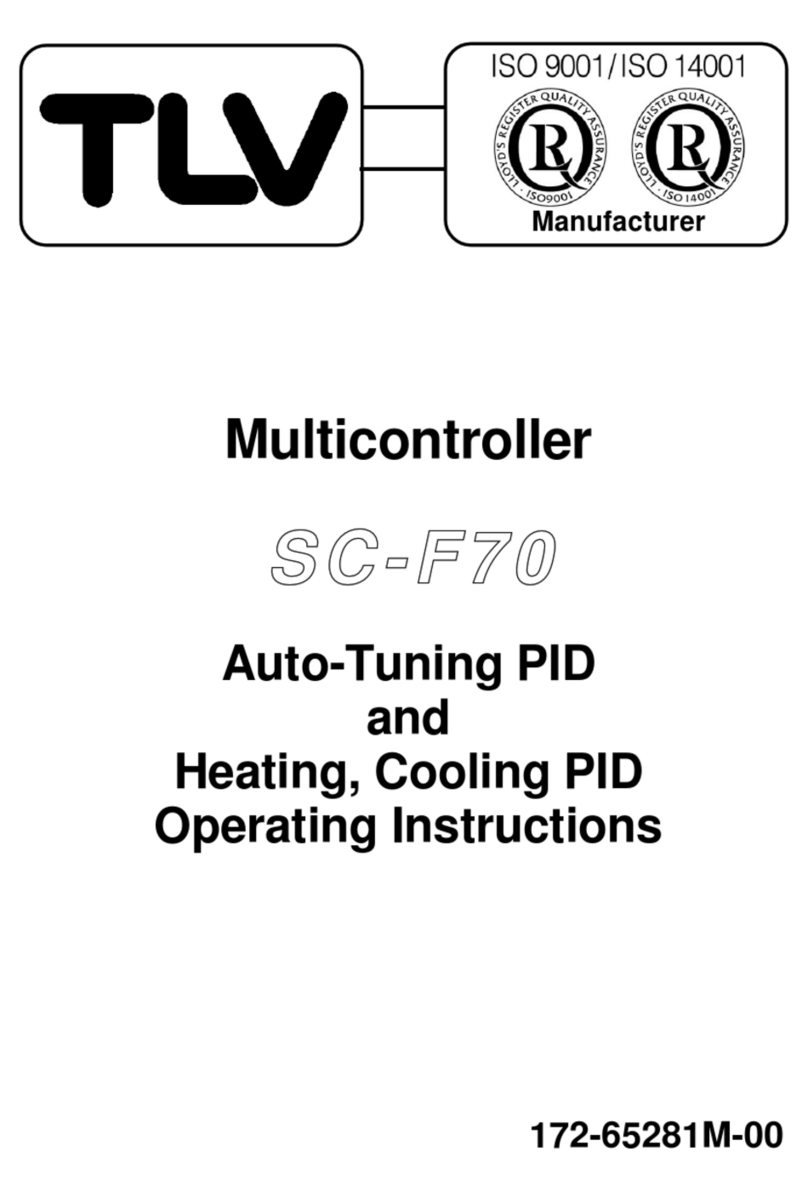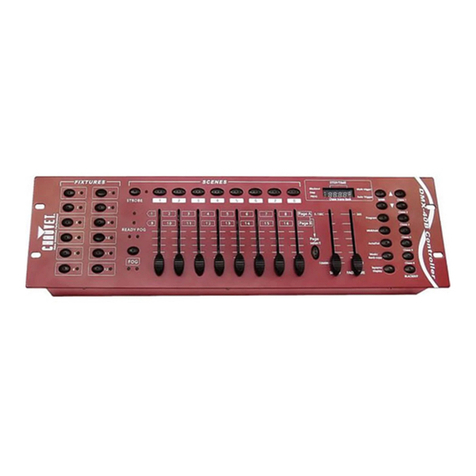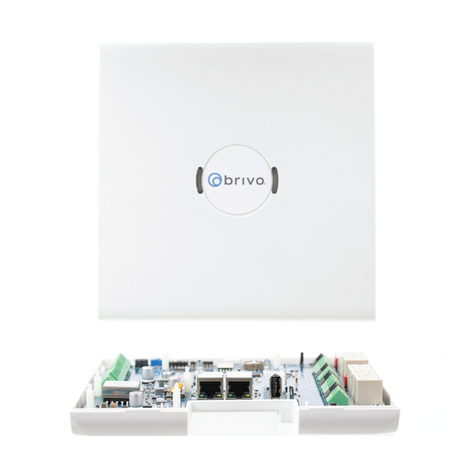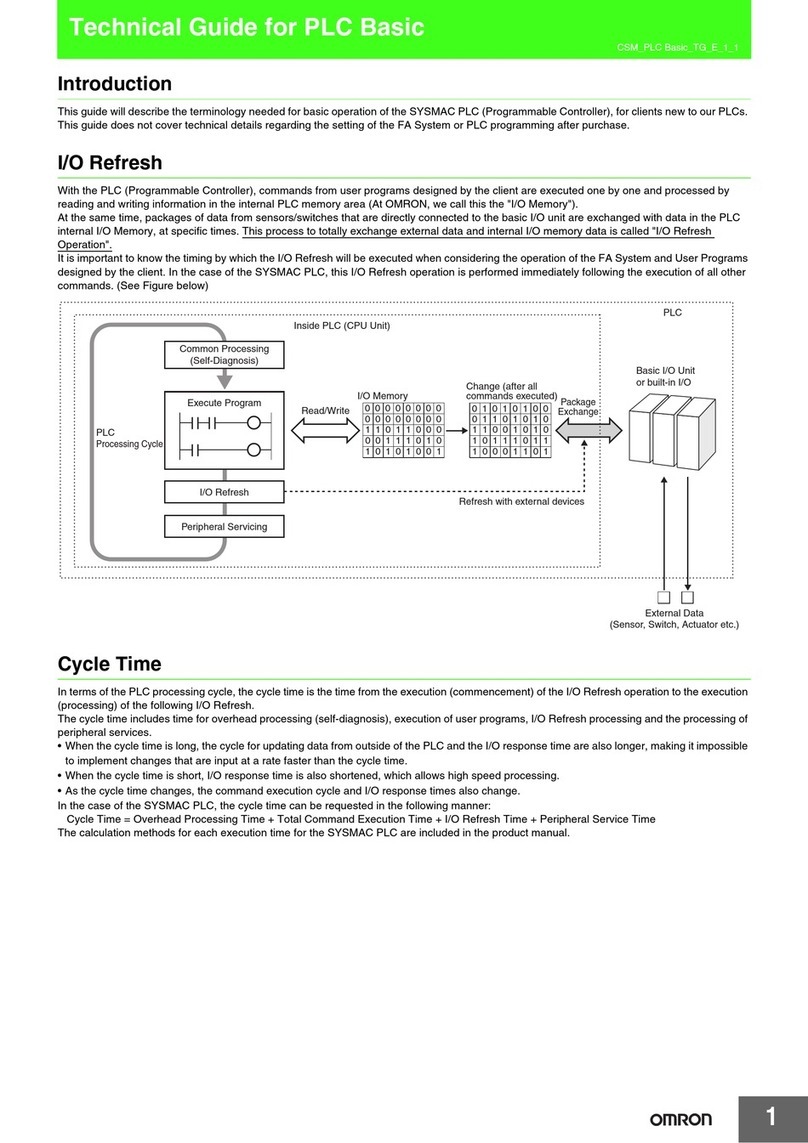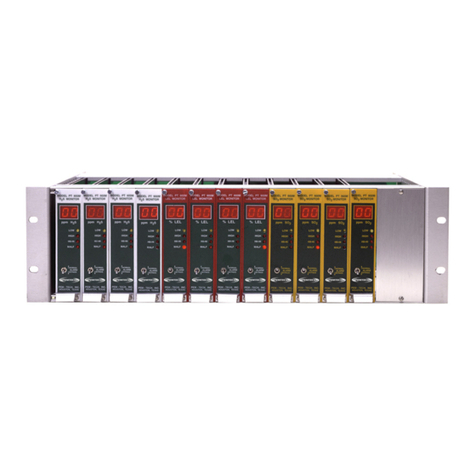AUMA EQ 40 Assembly instructions

Part-turn actuators
EQ 40 –EQ 150
EQ 300 –EQ 600
Assembly and commissioningOperation instructions

Read operation instructions first.
●Observe safety instructions.
●These operation instructions are part of the product.
●Store operation instructions during product life.
●Pass on instructions to any subsequent user or owner of the product.
Target group:
This document contains information for assembly, commissioning and maintenance staff.
Table of contents Page
41. Safety instructions................................................................................................................. 41.1. Prerequisites for the safe handling of the product 41.2. Range of application 51.3. Warnings and notes 51.4. References and symbols
62. Short description...................................................................................................................
73. Name plate..............................................................................................................................
94. Assembly................................................................................................................................ 94.1. Mounting position 94.2. Actuator: mount to valve 94.2.1. Overview on coupling variants 94.2.2. Actuator (with coupling): mount
125. Electrical connection............................................................................................................. 125.1. Basic information 135.2. Electrical connection 145.3. Accessories for electrical connection 145.3.1. External earth connection (option)
156. Commissioning...................................................................................................................... 156.1. End stops in part-turn actuator 166.1.1. End stop CLOSED: set 166.1.2. End stop OPEN: set 176.1.3. Dimensions of setting screws for setting the end stops 196.2. Limit switching: set 206.3. Mechanical position indicator: set
217. Operation and control of actuator........................................................................................ 217.1. Manual operation 217.1.1. Manual valve operation 217.2. Motor operation
228. Indications.............................................................................................................................. 228.1. Mechanical position indicator
239. Signals (output signals)......................................................................................................... 239.1. Digital outputs 239.2. Analogue outputs
2410. Corrective action.................................................................................................................... 2410.1. Faults during commissioning
2
EQ 40 –EQ 150
Table of contents EQ 300 –EQ 600

2410.2. Fuses within the actuator 2410.3. Motor protection (thermal monitoring)
2511. Servicing and maintenance................................................................................................... 2511.1. Preventive measures for servicing and safe operation 2511.2. Maintenance 2511.3. Disposal and recycling
2612. Technical data......................................................................................................................... 2612.1. Technical data Part-turn actuator
2913. Spare parts............................................................................................................................. 2913.1. Part-turn actuator EQ 40–EQ 600
33Index........................................................................................................................................
3
EQ 40 –EQ 150
EQ 300 –EQ 600 Table of contents

1. Safety instructions
1.1. Prerequisites for the safe handling of the product
Standards/directives The end user or the contractor must ensure that all legal requirements, directives,
guidelines, national regulations and recommendations with respect to assembly,
electrical connection, commissioning and operation are met at the place of installation.
Safety instructions/
warnings All personnel working with this device must be familiar with the safety and warning
instructions in this manual and observe the instructions given. Safety instructions
and warning signs on the device must be observed to avoid personal injury or property
damage.
Qualification of staff Assembly, electrical connection, commissioning, operation, and maintenance must
be carried out by suitably qualified personnel authorised by the end user or contractor
of the plant only.
Prior to working on this product, the staff must have thoroughly read and understood
these instructions and, furthermore, know and observe officially recognised rules
regarding occupational health and safety.
Commissioning Prior to commissioning, imperatively check that all settings meet the requirements
of the application. Incorrect settings might present a danger to the application, e.g.
cause damage to the valve or the installation.The manufacturer will not be held
liable for any consequential damage.Such risk lies entirely with the user.
Operation Prerequisites for safe and smooth operation:
●Correct transport, proper storage, mounting and installation, as well as careful
commissioning.
●Only operate the device if it is in perfect condition while observing these instruc-
tions.
●Immediately report any faults and damage and allow for corrective measures.
●Observe recognised rules for occupational health and safety.
●Observe national regulations.
●During operation,thehousingwarmsupandsurfacetemperatures > 60 °Cmay
occur.To prevent possible burns, we recommend checking the surface temper-
ature using an appropriate thermometer and wearing protective gloves, prior
to working on the device.
Protective measures The end user or the contractor are responsible for implementing required protective
measures on site, such as enclosures, barriers, or personal protective equipment
for the staff.
Maintenance To ensure safe device operation, the maintenance instructions included in this manual
must be observed.
Any device modification requires prior written consent of the manufacturer.
1.2. Range of application
AUMA actuators are designed for the operation of industrial valves in modulating
and open-close duty with a swing angle between 90° and 180°, e.g. for globe v ales
and ball valves.
Other applications require explicit (written) confirmation by the manufacturer.
The following applications are not permitted, e.g.:
●Industrial trucks according to EN ISO 3691
●Lifting appliances according to EN 14502
●Passenger lifts according to DIN 15306 and 15309
●Service lifts according to EN 81-1/A1
●Escalators
●Continuous duty
4
EQ 40 –EQ 150
Safety instructions EQ 300 –EQ 600

●Buried service
●Continuous submersion (observe enclosure protection)
●Potentially explosive atmospheres
●Radiation exposed areas in nuclear power plants
No liability can be assumed for inappropriate or unintended use.
Observance of these operation instructions is considered as part of the device's
designated use.
Information These operation instructions are only valid for the "clockwise closing" standard
version, i.e. driven shaft turns clockwise to close the valve.
1.3. Warnings and notes
The following warnings draw special attention to safety-relevant procedures in these
operation instructions, each marked by the appropriate signal word (DANGER,
WARNING, CAUTION, NOTICE).
Indicates an imminently hazardous situation with a high level of risk. Failure
to observe this warning results in death or serious injury.
Indicates a potentially hazardous situation with a medium level of risk.Failure
to observe this warning could result in death or serious injury.
Indicates a potentially hazardous situation with a low level of risk. Failure to
observe this warning could result in minor or moderate injury. May also be
used with property damage.
Potentially hazardous situation. Failure to observe this warning could result
in property damage. Is not used for personal injury.
Safety alert symbol warns of a potential personal injury hazard.
The signal word (here: DANGER) indicates the level of hazard.
1.4. References and symbols
The following references and symbols are used in these instructions:
Information The term Information preceding the text indicates important notes and information.
Symbol for CLOSED (valve closed)
Symbol for OPEN (valve open)
Wiring diagram Texts extracted from other documents
Texts extracted from other documents are highlighted in a different font.For example
Wiring diagram.
➥Result of a process step
Describes the result of a preceding process step.
5
EQ 40 –EQ 150
EQ 300 –EQ 600 Safety instructions

2. Short description
Part-turn actuator Definition in compliance with EN 15714-2/EN ISO 5211:
A part-turn actuator is an actuator which transmits a torque to the valve for less than
one full revolution.It need not be capable of withstanding thrust.
AUMA part-turn actuator Figure 1: AUMA part-turn actuator EQ 150 and EQ 600
AUMA part-turn actuators EQ 40 –EQ 600 are driven by an electric motor.For control
in motor operation and for processing the actuator signals, controls are integrated
within the housing. A handwheel is provided for occasional manual operation.
The swing angle is limited by internal end stops.Switching off in end positions may
be performed either by limit or torque seating.
Product variants
Figure 2:
[1] EQ with VSE local controls
[2] EQ with FSC20 emergency operation module/PEL-DS transformer housing
[3] EQ with base and lever
[4] EQ with KS1 compact connector
6
EQ 40 –EQ 150
Short description EQ 300 –EQ 600

3. Name plate
Figure 3: Name plate at actuator (with example)
[1] Type designation
[2] Order number
[3] Current type, mains voltage, mains frequency
[4] Operating time in [s] for a part-turn movement of 90°
[5] Permissible ambient temperature
[6] Manufacturer name and address
[7] Actuator serial number
[8] Nominal current and power
[9] Max. torque and type of duty
[10] Enclosure protection and swing angle
[11] Data Matrix code and (= CE-mark)
Descriptions referring to name plate indications
Type designation Table 1:
Description of type designation (in our example: EQ 150 F04-F07-N)
NF04-F10150EQ
TypeEQ
Size (max.torque in Nm)150
Flange sizes for valve flange (combination flange)F04-F10
Flange without spigotN
Order number The product can be identified using this number and the technical data as well as
order-related data pertaining to the device can be requested.
Please always state this number for any product inquiries.
On the Internet at http://www.auma.com > Service & Support > myAUMA, we offer
a service allowing authorised users to download order-related documents such as
wiring diagramsandtechnicaldata (both in German and English), inspection certificate
and the operation instructions when entering the order number.
7
EQ 40 –EQ 150
EQ 300 –EQ 600 Name plate

Serial number
Actuator Table 2:
Description of serial number (example of 0520NS12345)
NS123452005
Positions 1+2: Assembly in week = week 0505
Positions 3+4:Year of manufacture = 202020
Internal number for unambiguous product identificationNS12345
Data Matrix code Whenregistered as authorised user, youmayuseourAUMA Assistant App to scan
the Data Matrix code and directly access the order-related product documents without
having to enter order number or serial number.
Figure 4: Link to AUMA Assistant App:
For further Service & Support, software/apps/... refer to www.auma.com.
8
EQ 40 –EQ 150
Name plate EQ 300 –EQ 600

4. Assembly
4.1. Mounting position
Vertical mounting position with the flange pointing upwards (hood pointing downward)
is not allowed.In any other mounting position, the product may be operated without
restriction.
4.2. Actuator: mount to valve
The actuator is mounted to the valve using a coupling.
4.2.1. Overview on coupling variants
Design Figure 5: Coupling variants
[1] Bore with keyway
[2] Square bore
[3] Bore with two-flats
Application ●For valve attachments according to EN ISO 5211
●For rotating, non-rising valve stem
4.2.2. Actuator (with coupling): mount
Unbored couplings or couplings with pilot bore must be machined to match the valve
shaft prior to mounting the actuator to the valve (e.g. with bore and keyway, two-flat
or square bore).
Assemble valve and actuator in the same end position. As standard, the actu-
ator is supplied in end position CLOSED.
→Recommended mounting position for butterfly valves: End position CLOSED.
→Recommended mounting position for ball valves:End position OPEN.
Assembly steps 1. If required, move actuator in same end position as valve using the handwheel.
2. Clean mounting faces, thoroughly degrease uncoated mounting surfaces.
3. Apply a small quantity of grease to the valve shaft [2].
9
EQ 40 –EQ 150
EQ 300 –EQ 600 Assembly

4. Place coupling [1] onto valve shaft [2] and secure against axial slipping by using
a grub screw [3] or a clamping washer and a screw with curved spring lock
washer [4].Thereby, ensure that dimensions X,Y or L are observed (refer to
figure and table <Mounting positions for coupling>).
Figure 6: Examples: Fit coupling
[1] Coupling
[2] Valve shaft
[3] Grub screw
[4] Clamping washer and screw with curved spring lock washer
Figure 7: Mounting positions for coupling
Table 3:
Mounting position of the coupling within fitting dimensions according to AUMA definition
EQ 300 –EQ 600EQ 40 –EQ 150Dimensions
[mm]
F07, F10, F12F04, F05, F07, F10EN ISO 5211
0.50.5X max
33Y max
5041L max
5. Apply non-acidic grease at splines of coupling (e.g.Gleitmo by Fuchs).
10
EQ 40 –EQ 150
Assembly EQ 300 –EQ 600

6. Fit actuator. If required, slightly turn actuator until splines of coupling engage.
Figure 8: Example EQ 150 and EQ 600
Information Ensure that the spigot (if provided) fits uniformly in the recess and that the flanges
are in complete contact.
7. If flange bores do not match thread:
7.1 Slightly rotate handwheel until bores line up.
7.2 If required, shift actuator by one tooth on the coupling.
8. Fasten actuator with screws.
Information: We recommend applying liquid thread sealing material to the
screws to avoid contact corrosion.
9. Fasten screws crosswise to a torque according to table.
Table 4:
Tightening torques for screws
Tightening torque [Nm]Threads
Strength class 8.8
11M6
25M8
51M10
87M12
11
EQ 40 –EQ 150
EQ 300 –EQ 600 Assembly

5. Electrical connection
5.1. Basic information
Electric shock due to presence of hazardous voltage!
Failure to observe this warning can result in death, serious injury, or property damage.
→The electrical connection must be carried out exclusively by suitably qualified
personnel.
→Prior to connection, observe basic information contained in this chapter.
Wiring diagram/terminal
plan The pertaining wiring diagram/terminal plan (in German or English) is attached to
the device in a weather-proof bag, together with these operation instructions.It can
also be requested from AUMA (state order number, refer to name plate) or
downloaded directly from the Internet (http://www.auma.com).
Permissible networks
(supply networks) The actuators are suitable for use inTN andTT networks.For IT network, a suitable,
approved insulation monitor measuring the pulse code is required.
Current type, mains
voltage, mains fre-
quency
Type of current, mains voltage and mains frequency must match the data on the
name plate.
Protection and sizing on
site
For short-circuit protection and for disconnecting the actuator from the mains, fuses
and disconnect switches or circuit breakers have to be provided by the customer.
The current value for sizing the protection is derived from the current consumption
of the actuator (refer to name plate).We recommend adapting the switchgear sizing
to the max.current (Imax) and selecting and setting the overcurrent protection device
in compliance with the indications in the electrical data sheet.
Potential of customer
connections All input signals (control inputs) must be supplied with the same potential.
All output signals (status signals) must be supplied with the same potential.
Safety standards Safety measures and safety equipment must comply with the respectively valid
national on site specifications.All externally connected devices shall comply with
the relevant safety standards for the place of installation.
Connecting cables,
cable glands, reducers,
blanking plugs
●We recommend using connecting cables and connecting terminals according
to rated current (IN) (refer to motor or electrical data sheet).
●For device insulation, appropriate (voltage-proof) cables must be used.Specify
cables for the highest occurring rated voltage.
●Use connecting cable with appropriate minimum rated temperature.
●For connecting cables exposed to UV radiation (outdoor installation), use UV
resistant cables.
●For the connection of position transmitters, screened cables must be used.
Cable installation in ac-
cordance with EMC Signal and fieldbus cables are susceptible to interference.Motor cables are
interference sources.
●Lay cables being susceptible to interference or sources of interference at the
highest possible distance from each other.
●The interference immunity of signal and fieldbus cables increases if the cables
are laid close to the earth potential.
●If possible, avoid laying long cables and make sure that they are installed in
areas being subject to low interference.
●Avoid parallel paths with little cable distance of cables being either susceptible
to interference or interference sources.
12
EQ 40 –EQ 150
Electrical connection EQ 300 –EQ 600

5.2. Electrical connection
Figure 9: Electrical connection in standard version and product variants
[1] Hood
[2] Screws at actuator housing
[3] Cable entry
[4] Blanking plug
[5] Cable gland (not included in scope of delivery)
Electric shock due to presence of hazardous voltage!
Failure to observe this warning results in death or serious injury.
→Disconnect device from the mains before opening.
1. Open terminal compartment:
1.1 For standard version:Loosen screws [2] and remove hood [1] at the actu-
ator housing.
1.2 For KS1, VSE and FSC20/PEL-DS product variants, remove the laterally
mounted cover or hood.The hood [1] may remain closed.
2. Remove available blanking plugs [4].
3. Insert cable glands [5] suitable for connecting cables.
4. Seal unused cable entries [3] with suitable blanking plugs [4].
The enclosure protection stated on the name plate IP...is only ensured if cable
glands and blanking plugs are used which are appropriate for the specified
enclosure protection. For use in potentially explosive atmospheres,only cable
glands and blanking plugs approved for the respective type of protection may
be used.
5. Remove cable and wire sheathing.
6. For flexible cables:Use wire end sleeves according to DIN 46228.
7. Connect cable according to order-related wiring diagram.
8. Fasten cable glands with the torque as specified by the manufacturer to ensure
respect of required enclosure protection.
9. Place hood [1] or cover and fasten screws evenly crosswise.
If commissioning is directly performed following electrical connection: Leave
hood [1] open!
13
EQ 40 –EQ 150
EQ 300 –EQ 600 Electrical connection

5.3. Accessories for electrical connection
5.3.1. External earth connection (option)
Hazardous voltage due to insulating impact of powder coating!
Risk of electric shock.
→Strip powder from actuator surface (file down).
→Connect all protective earth conductors.
→Connect PE connection to external protective earth conductor of connection
cable.
→Power the device only once the protective earth conductor has been connected.
Figure 10: Earth connection
Application External earth connection (U-bracket) for connection to equipotential compensation.
Table 5:
Terminal cross sections and earth connection tightening torques
Tightening torquesTerminal cross sectionsConductor type
3 –4 Nm2.5 mm² to 6 mm²Solid wire and stranded
3 –4 Nm1.5 mm² to 4 mm²Fine stranded
For fine stranded (flexible) wires, connection is made via cable lugs/ring terminals.When connecting
two individual wires with a U-bracket, cross sections have to be identical.
14
EQ 40 –EQ 150
Electrical connection EQ 300 –EQ 600

6. Commissioning
6.1. End stops in part-turn actuator
Figure 11: End stops
End stop OPEN
End stop CLOSED
The internal end stops limit the swing angle.They protect the valve during motor
operation and serve the purpose as limitation for manual operation via handwheel.
The swing angle (e.g.90°) is specified on the name plate and adjustable by this
value within a range of ±15°.
End stop setting is generally performed by the valve manufacturer prior to installing
the valve into the pipework.
Exposed, rotating parts (discs/balls) at the valve!
Pinching and damage by valve or actuator.
→End stops should be set by suitably qualified personnel only.
The sequence of setting, first end stop CLOSED setting then end stop OPEN setting
or vice versa, depends on the type of valve:
●Recommendation for butterfly valves: Set end stop CLOSED first.
➭page 16, End stop CLOSED: set
●Recommendation for ball valves:Set end stop OPEN first.
➭page 16, End stop OPEN: set
15
EQ 40 –EQ 150
EQ 300 –EQ 600 Commissioning

6.1.1. End stop CLOSED: set
1. Loosen nut [1] and turn slightly in opposite direction.
Figure 12:
2. Turn valve via handwheel to end position CLOSED. (also refer to:➭page 21,
Manual valve operation)
Figure 13:
3. If end position CLOSED has not been reached:Turn back setting screw [2]
until the valve can be operated into end position CLOSED.
Information:
Avoid excessive unscrewing of settings screw [2]. Respect maximum distance
between screw head and housing wall.Refer to: ➭page 17, Dimensions of
setting screws for setting the end stops
Figure 14:
4. If the valve is in end position CLOSED:Turn setting screw [2] up to the stop.
➥This completes the setting of end stop CLOSED.
5. Hold setting screw [2] and tighten nut [1] until it is flush on the housing.Firmly
tighten nut [1] using a spanner.
Information: The setting screw [2] must not turn when tightening the nut [1]:
Otherwise the end stop setting will be changed.
Having completed this procedure, end position switch CLOSED can be immediately
set. ➭page 19, Limit switching: set
6.1.2. End stop OPEN: set
If the end stop CLOSED has already been set,setting of the end position OPEN
is generally not required.
16
EQ 40 –EQ 150
Commissioning EQ 300 –EQ 600

1. Loosen nut [3] and turn slightly in opposite direction.
Figure 15:
2. Turn valve via handwheel to end position OPEN. (also refer to ➭page 21,
Manual valve operation)
Figure 16:
3. If end position OPEN has not been reached:Turn back setting screw [4] until
the valve can be operated into end position OPEN.
Information:
Avoid excessive unscrewing of settings screw [4]. Respect maximum distance
between screw head and housing wall.Refer to: ➭page 17, Dimensions of
setting screws for setting the end stops
Figure 17:
4. If the valve is in end position OPEN:Turn setting screw [4] up to the stop.
➥This completes the setting of end stop OPEN.
5. Hold setting screw [4] and tighten nut [3] until it is flush on the housing.Firmly
tighten nut [1] using a spanner.
Information: The setting screw [4] must not turn when tightening the nut [3]:
Otherwise the end stop setting will be changed.
Once this procedure is completed, end position switch OPEN can be immediately
set.
6.1.3. Dimensions of setting screws for setting the end stops
Risk of damage at valve or gearbox in case of insufficient reach of setting
screw!
→Observe dimensions Tmin. and Tmax..
17
EQ 40 –EQ 150
EQ 300 –EQ 600 Commissioning

Figure 18: End stop, sizes EQ 40 –EQ 150
Table 6:
DistanceT between screw head and housing wall EQ 40–EQ 150
For 150°/180°1)
For 90°/120°1)
Dimensions T [mm]
Special2)
StandardSpecial2)
Standard
3129.12725.1Tmax. (+15°)
27.52323.519T (for 90°/120° or 150°/180°)
2416.92012.9Tmin. (–15°)
Refer to name plate for swing angle1) Special coupling (coupling type ST-01); refer to the order-related technical data sheet for the
coupling type.
2)
Figure 19: End stop, sizes EQ 300 –EQ 600
Table 7:
DistanceT between screw head and housing wall EQ 300–EQ 600
For 150°/180°1)
For 90°/120°1)
Dimension T [mm]
N/A46Tmax. (+15°)
N/A31T (for 90°/120° or 150°/180°)
N/A16Tmin. (–15°)
Refer to name plate for swing angle1)
18
EQ 40 –EQ 150
Commissioning EQ 300 –EQ 600

6.2. Limit switching: set
Figure 20: Limit switches
[1] WEL: Limit switch, closing, counterclockwise rotation
(End position switch for switching off the motor in end position OPEN)
[2] WER: Limit switch, closing, clockwise rotation
(End position switch for switching off the motor in end position CLOSED)
[3] WE 1: optional, additional limit switch in direction OPEN
(For signalling end position OPEN or any intermediate position)
[4] WE 2: optional additional limit switch in direction CLOSE
(For signalling end position CLOSED or any intermediate position)
The limit switching records the travel.When reaching the preset position (end
position/intermediate position), the switches are operated.For limit seating, the
signals of the end position switches are used for end position tripping.
We recommend switching off the actuator in the end position using the end
position switches to increase the lifetime.
The limit switching is located below the hood.
1. Turn valve via handwheel to the desired end position.
2. Open eccentric disc using a spanner (width across flats 10).
Figure 21:
3. Adjust the cam using a screwdriver to cause switch tripping. Set the switching
point by turning the switch in the direction of the arrow of the <Limit switching>
figure.
19
EQ 40 –EQ 150
EQ 300 –EQ 600 Commissioning

4. Close eccentric disc again using a spanner (width across flats 10).
6.3. Mechanical position indicator: set
Figure 22:Versions mechanical position indicator
[1] Version with trailing pointer
[2] Version with rotation angle scale
The mechanical position indicator is located below the hood.
1. Operate actuator to end position CLOSED.
2. Loosen screw at trailing pointer or rotation angle scale.
3. Set trailing pointer or rotation angle scale:
→Turn trailing pointer perpendicular to the pipe or until end stop.
→Set rotation angle scale to 0° (for end position = CLOSED).
4. Fasten screw at trailing pointer or rotation angle scale.
Further information on indication: ➭page 22, Mechanical position indicator
20
EQ 40 –EQ 150
Commissioning EQ 300 –EQ 600
This manual suits for next models
5
Table of contents
Other AUMA Controllers manuals
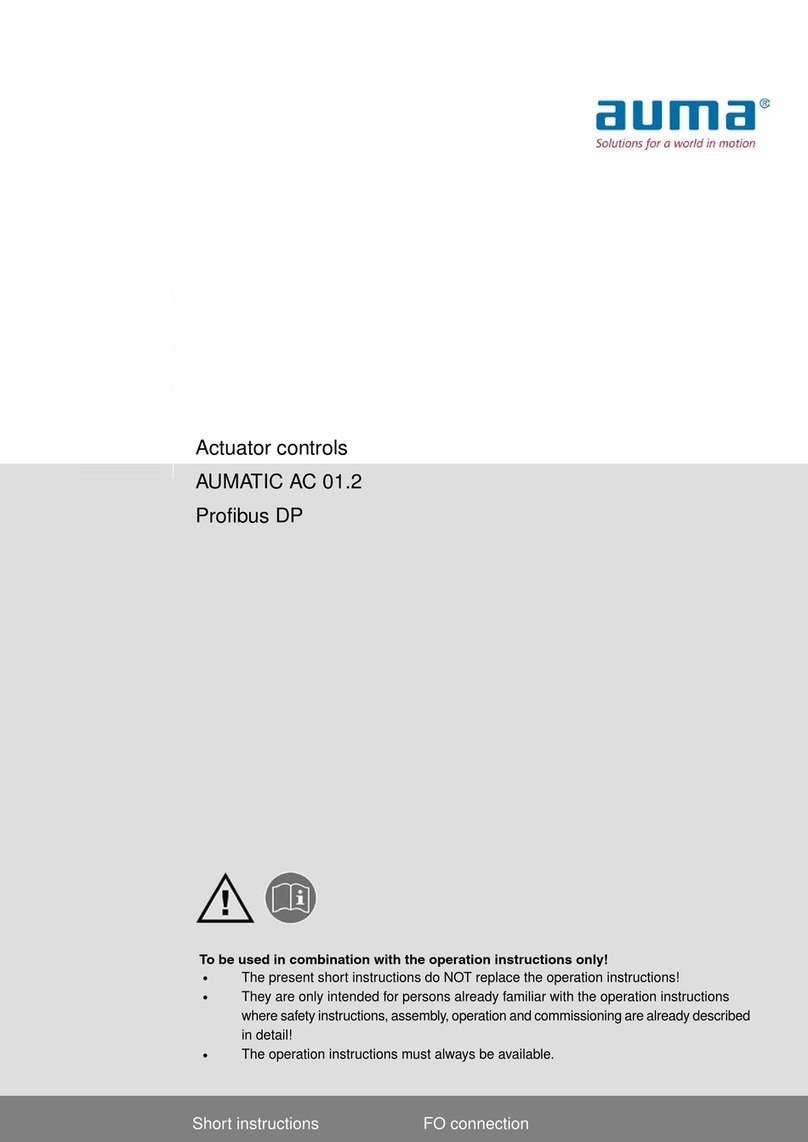
AUMA
AUMA AUMATIC AC 01.2 Manual
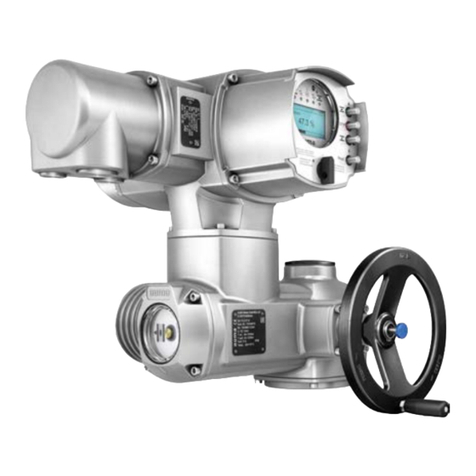
AUMA
AUMA SAR 16.2 User manual
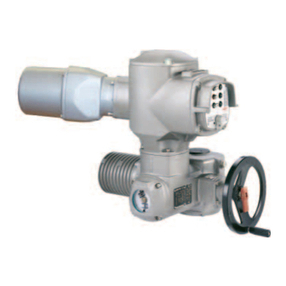
AUMA
AUMA SAExC 07.1 User manual
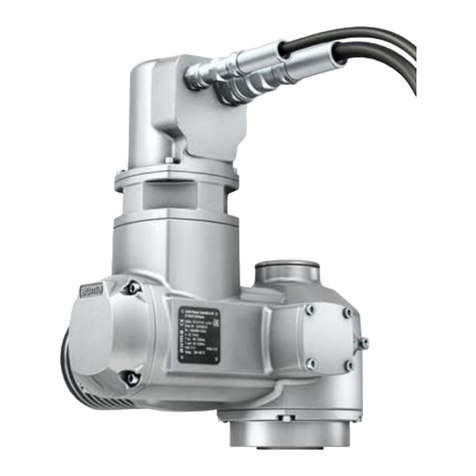
AUMA
AUMA SAEx 07.2-UW User manual
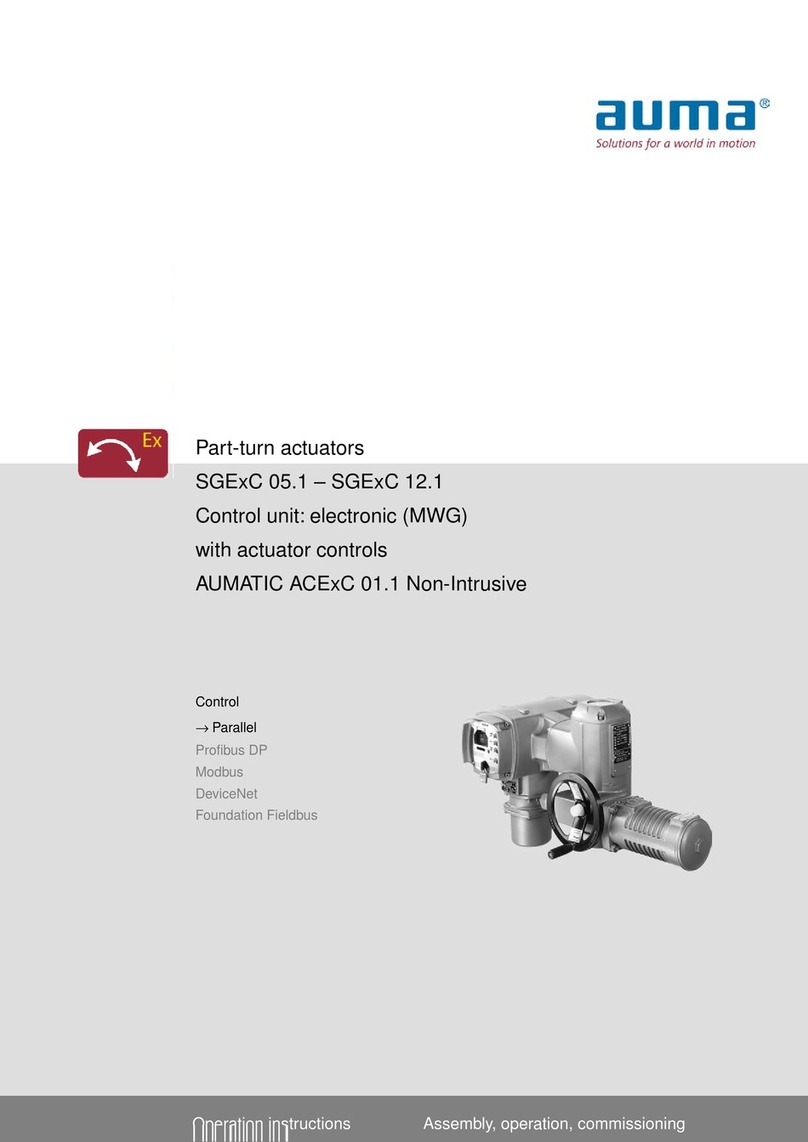
AUMA
AUMA SGExC 05.1 User manual

AUMA
AUMA SA Series User manual

AUMA
AUMA SG 03.3 Series User manual
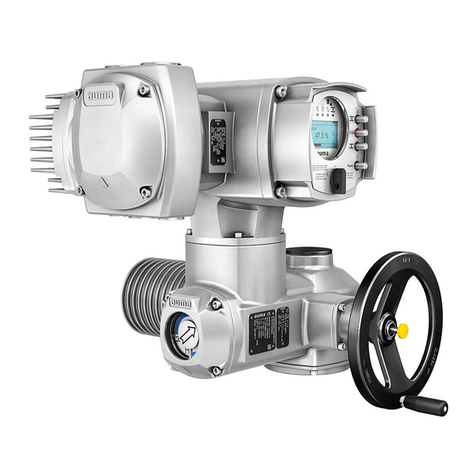
AUMA
AUMA SAVEx 07.2 User manual
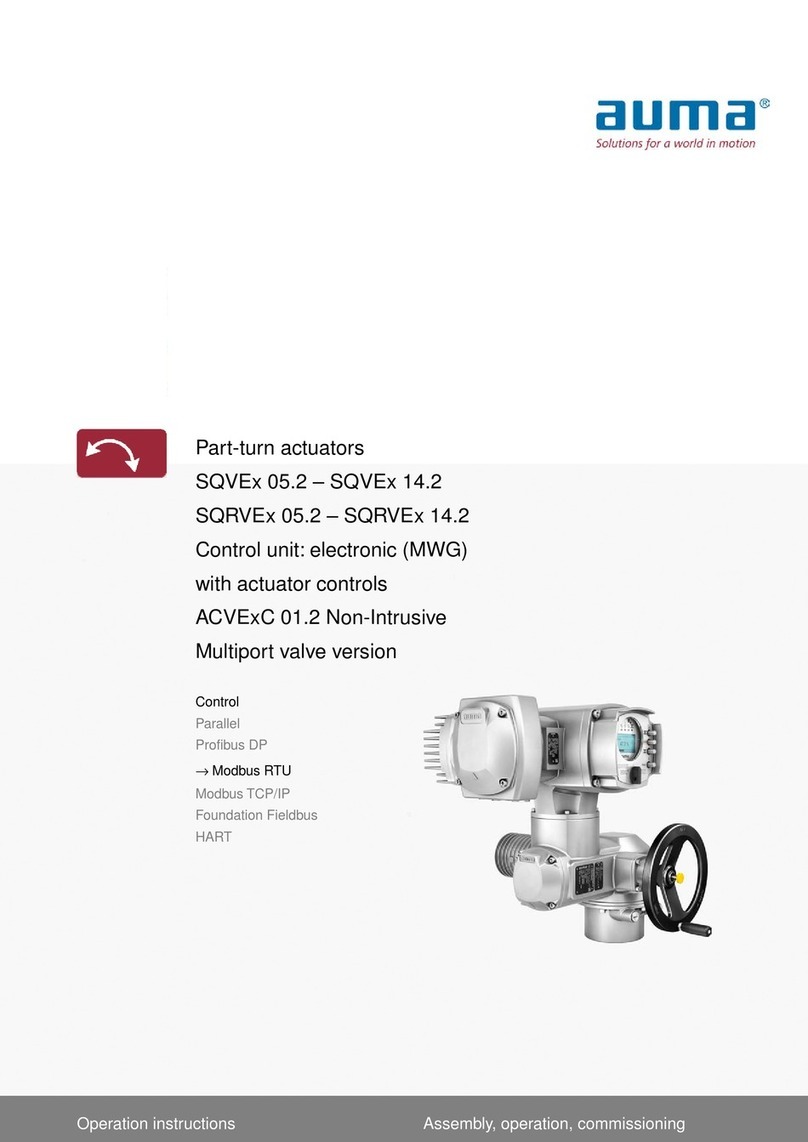
AUMA
AUMA SQVEx 05.2 User manual
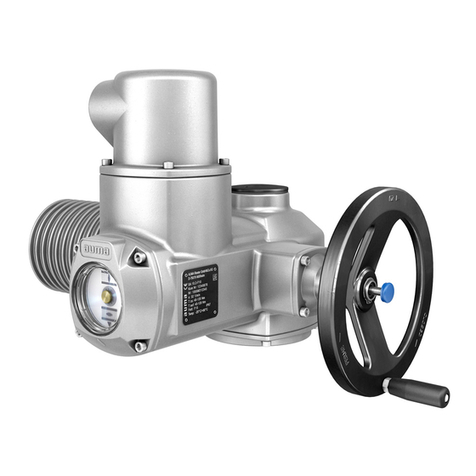
AUMA
AUMA SA 07.2 User manual
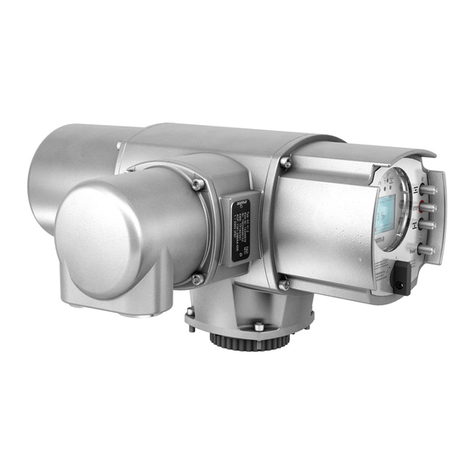
AUMA
AUMA ACE C 01.2 Profinet Series User manual
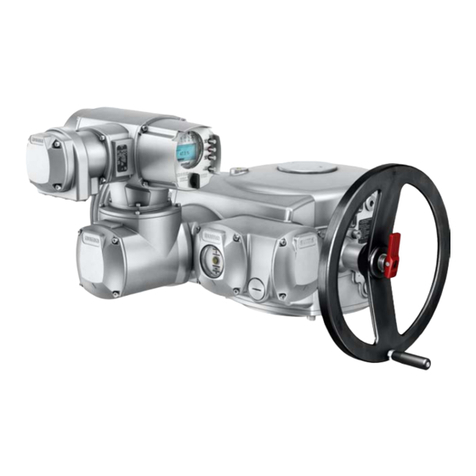
AUMA
AUMA SA 25.1 User manual
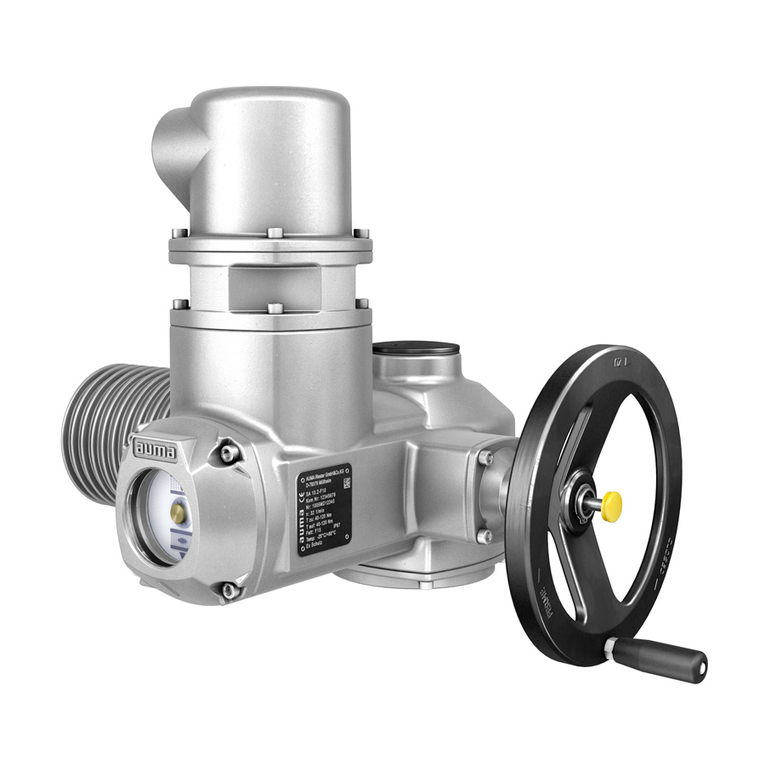
AUMA
AUMA SAEx 07.2 User manual
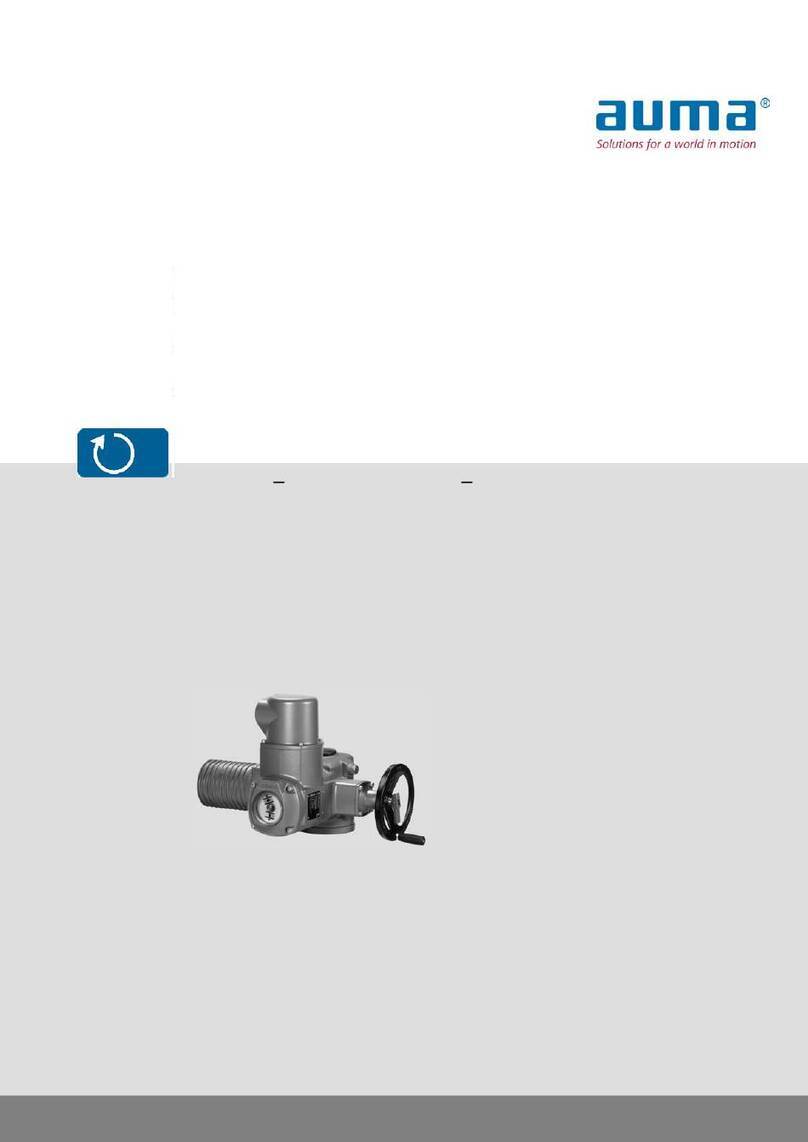
AUMA
AUMA SA 16.1 User manual
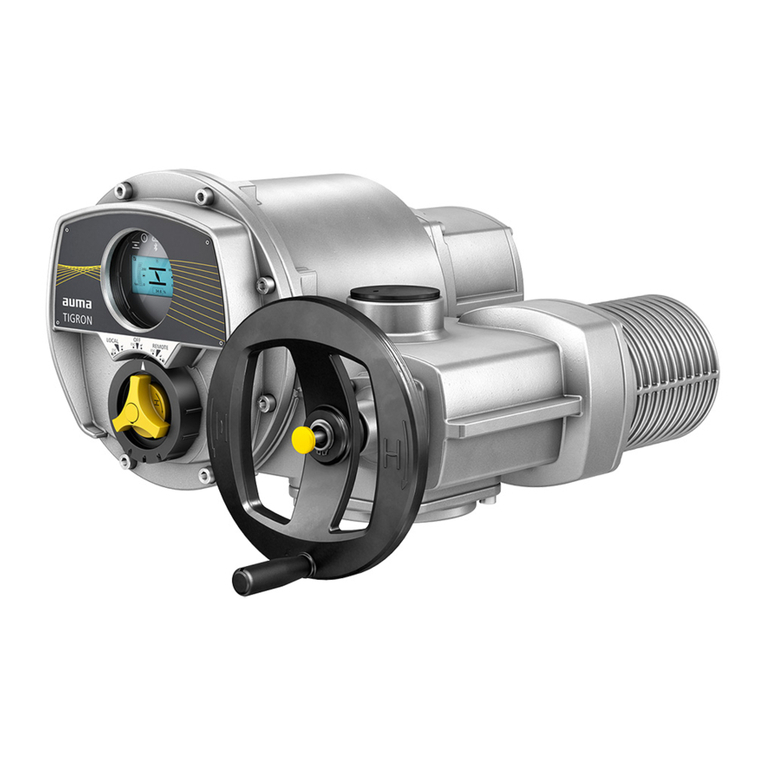
AUMA
AUMA TIGRON TR-M30X User manual

AUMA
AUMA SA 07.2 User manual
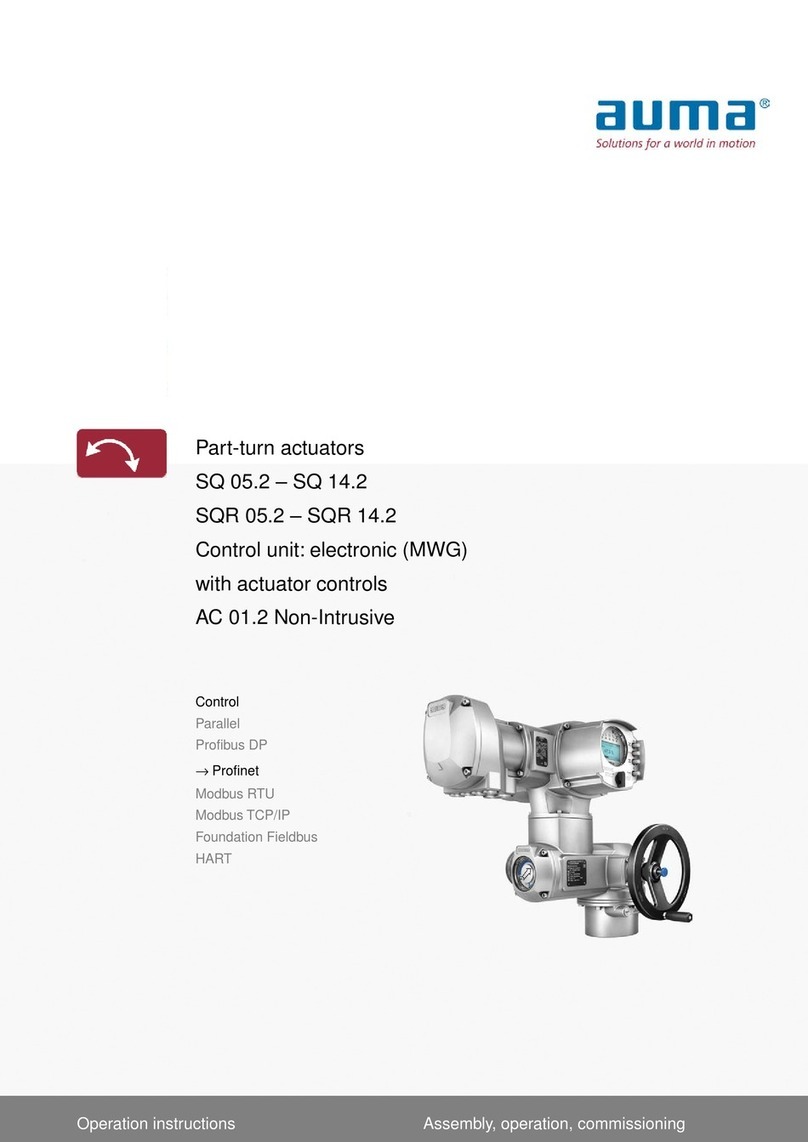
AUMA
AUMA SQ Series User manual
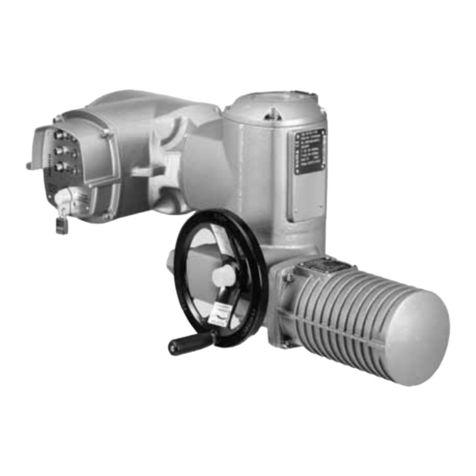
AUMA
AUMA SG 05.1-F05 User manual

AUMA
AUMA PROFOX PF-M25 User manual

AUMA
AUMA PROFOX PF-Q80 User manual
